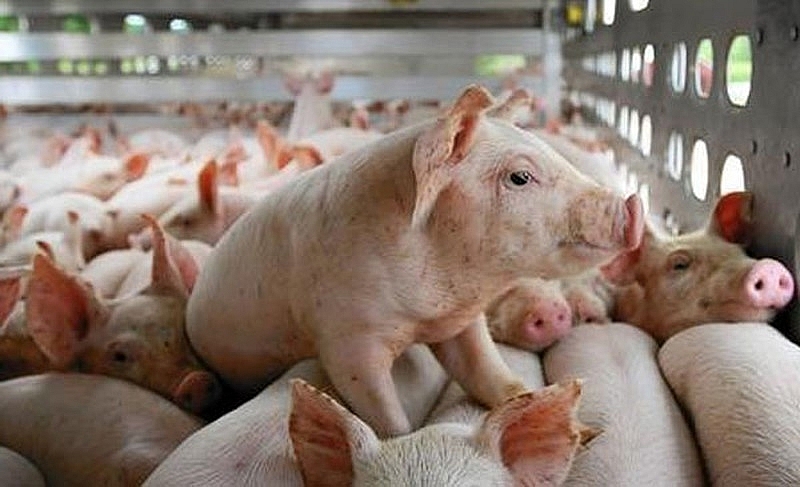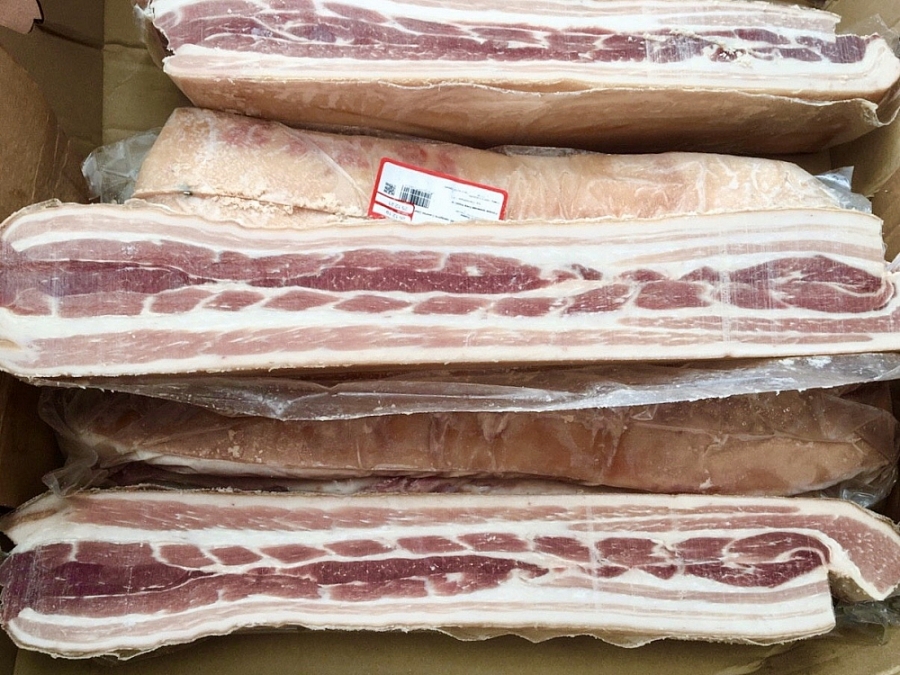 News
News
According to a report by the Department of Livestock Production (Ministry of Agriculture and Rural Development (MARD)), the price of live pigs for slaughter has been on a downward trend from March and April 2021 with an average price of about 70,000 - 75,000 VND/ kg, by July/August 2021, the average price is from 50,000 - 58,000 VND/kg, in some localities down to 50,000 VND/kg. In September 2021, the price continued to decrease. Up to now, the average price is ranging from 35,000 - 41,000 VND/kg depending on the region. Meanwhile, the production cost is about 53,000 - 60,000 VND/kg. Thus, with the current market price of live pigs, farmers are at a loss. Although the price of live hog has dropped sharply, the price of pork at butchers, traditional markets and supermarkets is still high due to the simultaneous increase in related costs, especially transportation costs and epidemic prevention costs. .
 |
| Live hog price on July 16: Standing at a high level |
For poultry products, the price of white industrial chicken in the period of July and August 2021 in the northern provinces is about 15,000 - 20,000 VND/kg; Southern provinces are 6,000 - 10,000 VND/kg, in recent days the Northern provinces are over 25,000 VND/kg, the Southern provinces 18,000 - 22,000 VND/kg. The price of colored feathered chickens did not change much in the first 9 months of 2021, on average ranging from 50,000 - 55,000 VND/kg in the North, the average price in the Central and Southern regions is equivalent or usually higher from 2,000 - 5,000 VND/kg.
While at the output stage, the price fell sharply, the price of animal feed materials increased by 16-36%, leading to a very high increase in the price of mixed feed and continued to increase, causing the livestock industry to face difficulties. double towel.
Mr. Nguyen Van Trong - Deputy Director of the Department of Livestock Production - said that in the first 9 months of 2021, the poultry flock continued to grow, but due to a decrease in market demand and the complicated situation of the Covid-19 epidemic, the volume of poultry production continued to grow. holding backlog in high barns. In particular, in the Southeast and Southwest provinces, livestock enterprises in August and September only consumed 5-10% of white industrial chickens, recently in August the Southwest and Southeast provinces The set of industrial chickens that are too old to be released from the barn stagnates over 9.3 million with a weight of over 3.8kg (normally exports 1.8-2.5kg), about 70% of colored feathered chickens are consumed. Causing farmers a lot of losses, stagnation of capital. Over-sized pigs are stagnant about 30%.
Notably, the domestic live hog price fell sharply, but the amount of frozen pork imported remained high. According to data from the Department of Agricultural Products Processing and Market Development (Ministry of Agriculture and Rural Development), in the first eight months of 2021, pork imports reached more than 257,000 tons, worth more than US$508 million, up 62% in volume and increased by 84% in value over the same period in 2020.
The Vietnam Livestock Association said that although frozen pork only accounts for about 5% of total pork production in the country. Processing factories import frozen pork because the supply is abundant, cheap and more stable than in the country, ensuring food safety. However, the import of livestock products, especially low-cost foods is increasing, especially when the import tariff lines on livestock products are returning to 0%, the market pressure is on the rise. market with domestic livestock will be enormous.
Need to control imported pork
Facing the dual difficulties that the domestic livestock industry is facing, recently the Vietnam Livestock Association has issued Official Letter No. 56/HCN-CV proposing the Prime Minister to direct the Ministry of Agriculture and Rural Development to structure and direct the operation. production by categories for a number of main livestock products, such as: pork, poultry, buffalo meat, eggs and milk in a closed chain in accordance with the potential and needs of the market domestic and international integration. In which, it is necessary to maximize the role of enterprises and associations to balance and regulate production closer to the market; coordinate with the Ministry of Industry and Trade to strictly control the import of livestock products, especially cheap products and commercial live animals….
 |
| Pork belly only imported from Russia |
The reason given by the Vietnam Livestock Association is that many imported livestock products have increased dramatically in recent times. Specifically, in 2020 compared to 2019, pork imports increased by 404%, poultry meat increased by 15%, buffalo meat increased by 44% ... has caused more difficulties for domestic livestock production. Most of the domestic livestock products are currently being sold below production cost and cannot be sold.
Currently, Vietnam is having a trade deficit of animal feed products with an average of about 6-6.5 billion USD/year. Therefore, the Vietnam Livestock Association proposes that the Ministry of Industry and Trade negotiate with major exporting countries to have preferential trade policies and conditions for the export of raw materials for animal and aquaculture feeds to Vietnam. Negotiating to open export markets for livestock products, with attention paid to heat-treated poultry meat products, which will be advantageous for domestic livestock production in the coming time. Expanding the system of stores and supermarkets for cool foods in the market, even in rural areas.
The Vietnam Livestock Association also proposed the Ministry of Finance to review and adjust the import tax policy to support domestic livestock production according to the export tax brackets that Vietnam has committed in trade agreements. In which: increase or keep the import tax on pork and poultry meat; reduce import tax on corn, soybean and increase import tax on some additional raw materials and animal feeds that can be produced domestically, such as mineral feeds, organic acids... ; propose a package of policies to support production recovery of the livestock industry, including the item of supporting credit interest rates for farmers to borrow loans to restore and expand production. The State Bank has a preferential credit policy, debt freezing, debt rescheduling, continuing to lend loans to businesses and breeders to restore production...
Localities need to create more favorable conditions for the circulation and restoration of livestock production, especially so that livestock producers and traders have the best access to disease control measures on humans and livestock. ; reserve space and land fund for the development of concentrated farm animal husbandry and forage crops.
| With an average growth rate of 5-6%/year, the livestock industry basically meets the food demand for domestic consumption and increases exports. |